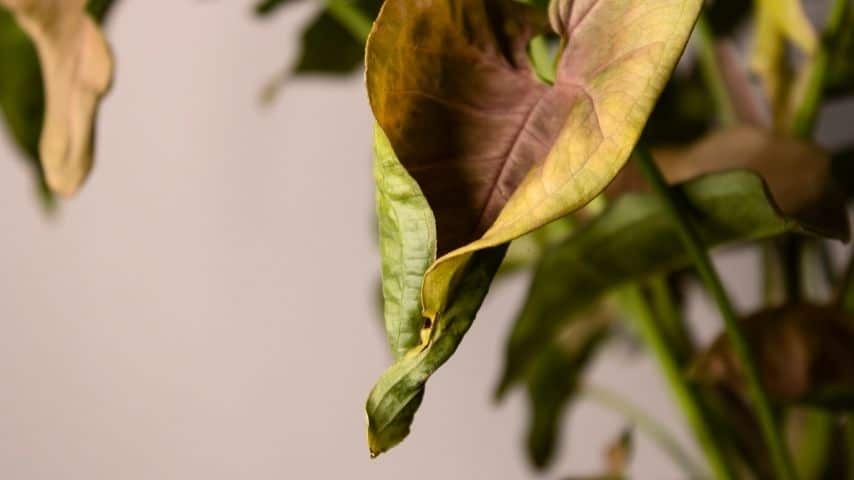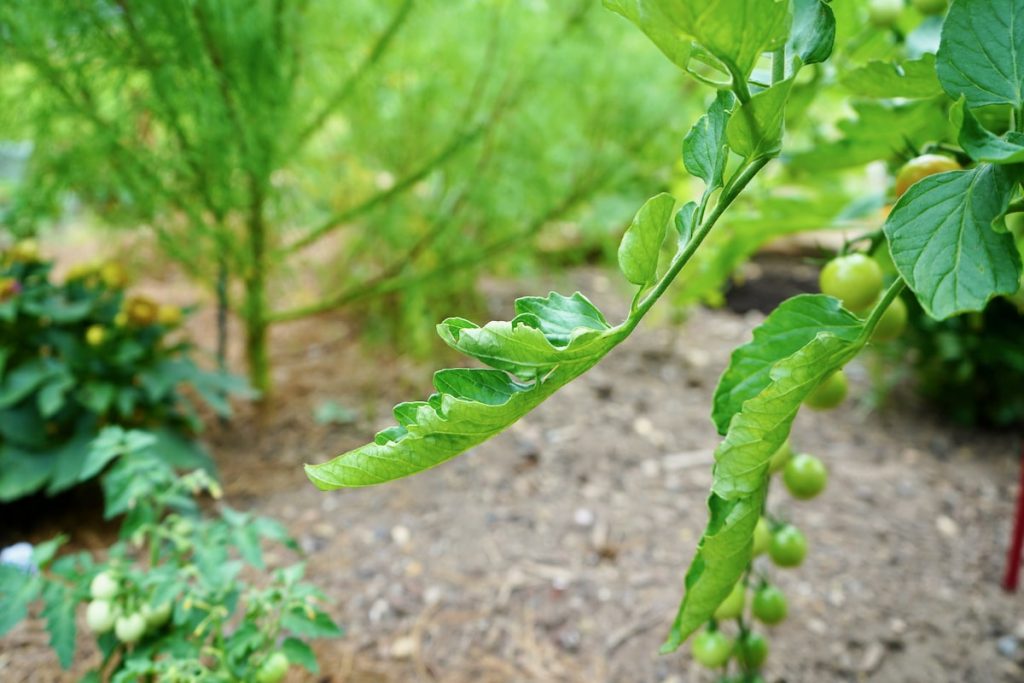Leaves curling upwards can be a perplexing sight for plant enthusiasts and gardeners alike. This phenomenon often indicates underlying issues that may affect the overall health of the plant. Whether you’re nurturing houseplants, tending to a garden, or cultivating a small farm, understanding why leaves curl upwards is crucial for maintaining vibrant and thriving plants. In this article, we will explore the common causes, symptoms, and solutions for upward curling leaves, providing you with the knowledge necessary to keep your plants healthy. 🌱
Understanding Leaf Curling

Before diving into the specific causes of leaf curling, it’s essential to understand what leaf curl means. Leaf curling is when leaves bend or twist in an abnormal way, which can lead to various other symptoms such as yellowing, wilting, or dropping. Upward curling of leaves often signals stress, whether it’s environmental or biological. Understanding these factors can help diagnose the issue quickly and effectively.
Common Causes of Upward Curling Leaves
There are several reasons why leaves may curl upwards, ranging from nutrient deficiencies to pest infestations. Below are some of the most common causes:
| Cause | Description |
|---|---|
| Environmental Stress | Extreme temperatures, humidity levels, and light exposure can cause leaves to curl. |
| Nutrient Deficiencies | Lack of essential nutrients like nitrogen, phosphorus, or potassium can lead to curling leaves. |
| Pest Infestation | Insects such as aphids, spider mites, and thrips can cause leaves to curl due to feeding damage. |
| Diseases | Fungal and viral infections can also lead to abnormal leaf growth and curling. |
| Watering Issues | Both overwatering and underwatering can result in leaf curling as the plant struggles to maintain its moisture balance. |
Environmental Stressors
Environmental conditions play a pivotal role in plant health. Factors such as temperature, humidity, and light exposure can significantly influence the way leaves grow. Here’s a closer look at how these conditions affect leaf curling:
Temperature Extremes
Plants thrive in specific temperature ranges. When temperatures are too high or too low, leaves may respond by curling upwards to reduce surface area exposure, thereby conserving moisture. Aim to maintain optimal temperatures for your specific plants.
> Important Note: Most indoor plants prefer temperatures between 60°F to 75°F (15°C to 24°C). Sudden changes or prolonged exposure to extreme temperatures can cause stress and lead to leaf curling.
Humidity Levels
Humidity is another critical factor affecting plant health. Low humidity can cause leaves to curl upwards as a reaction to moisture loss. Many tropical plants, for instance, prefer higher humidity levels. Using a humidifier or placing water trays near plants can help maintain ideal humidity levels.
Light Exposure
Excessive or insufficient light can also lead to upward curling. When plants receive too much direct sunlight, they may curl their leaves to minimize light absorption. Conversely, lack of light can lead to upward curling as the plant stretches toward a light source.
Nutrient Deficiencies
Deficiencies in essential nutrients can lead to various symptoms, including upward curling of leaves. Plants need a balanced supply of macronutrients and micronutrients to thrive. Here’s what to look for:
Nitrogen Deficiency
Nitrogen is critical for overall plant growth. A deficiency can result in yellowing leaves that curl upwards as the plant tries to conserve resources. If you notice stunted growth alongside curled leaves, it might be time to add a nitrogen-rich fertilizer.
Phosphorus and Potassium Deficiency
Phosphorus is vital for root development, while potassium is essential for water regulation. A deficiency in either can cause leaves to curl, particularly in older leaves, as the plant reallocates resources to new growth. Ensuring a balanced fertilizer regimen can mitigate these issues.
Pest Infestations
Pests can wreak havoc on plant health and lead to various symptoms, including leaf curling. Common culprits include:
- Aphids: These tiny insects suck sap from leaves, leading to curling and yellowing.
- Spider Mites: These pests create webbing and cause leaves to curl and speckle.
- Thrips: They feed on flowers and leaves, causing damage that results in curling.
> Important Note: Regularly inspecting your plants for pests can help catch infestations early. Use insecticidal soaps or natural predators to control pest populations.
Diseases and Infections
Fungal and viral infections can also lead to leaf curling. Fungi such as powdery mildew can affect leaf structure, while viral infections may cause twisting and distortion. Here are some common diseases:
- Powdery Mildew: This fungal infection appears as a white powdery coating on leaves.
- Viral Infections: Symptoms vary, but many viruses can cause leaf curling and yellowing.
Proper sanitation and avoiding overcrowded growing conditions can help prevent the spread of diseases.
Watering Issues

Watering habits significantly impact plant health. Both overwatering and underwatering can lead to upward curling of leaves:
Overwatering
Excess moisture in the soil can suffocate roots and lead to root rot. When plants are overwatered, leaves may curl upwards as a stress response. Ensure proper drainage and only water when the top layer of soil feels dry.
Underwatering
Conversely, if a plant is underwatered, it may curl its leaves in an attempt to retain moisture. Regularly check the soil moisture level and water accordingly.
Identifying Leaf Curling Symptoms
Recognizing the symptoms of leaf curling is essential for determining the appropriate actions to take. Aside from the curling itself, other signs may indicate underlying issues:
- Yellowing Leaves: This can indicate nutrient deficiencies or overwatering.
- Wilting: A sign of both underwatering and root damage.
- Stunted Growth: Poor growth can indicate a lack of nutrients or pests.
- Discoloration: Dark spots or patches may suggest fungal infections.
Solutions for Upward Curling Leaves
Once you identify the cause of your plant’s curling leaves, taking appropriate action is vital for restoring its health. Here are some solutions for the common issues discussed:
Adjusting Environmental Conditions
If environmental stress is the issue, consider the following:
- Temperature: Move plants to a more suitable location to maintain optimal temperature ranges.
- Humidity: Increase humidity using trays of water, pebble trays, or humidifiers.
- Light: Adjust your plants’ position to either shield them from intense light or provide more light as needed.
Correcting Nutrient Deficiencies, Leaves Curling Upwards
To address nutrient deficiencies:
- Fertilize: Use a balanced fertilizer according to the needs of your plant species.
- Soil Testing: Conduct soil tests to determine nutrient levels, allowing for more precise adjustments.
Managing Pests
To combat pest infestations:
- Regular Inspections: Check your plants frequently for signs of pests.
- Natural Remedies: Introduce beneficial insects like ladybugs or use insecticidal soap to manage populations.
Preventing and Treating Diseases
To prevent or treat diseases:
- Sanitation: Keep growing areas clean and free of debris.
- Fungicides: Apply appropriate fungicides for specific fungal issues.
Watering Correctly
To manage watering issues:
- Establish a Routine: Develop a consistent watering schedule, checking soil moisture before watering.
- Improve Drainage: Ensure pots have drainage holes and consider using well-draining soil mixes.
Conclusion: Leaves Curling Upwards
Leaves curling upwards can indicate various underlying issues that need to be addressed promptly for your plants to thrive. By understanding the common causes and implementing the suggested solutions, you can nurture your plants back to health. Remember, healthy plants not only look great but also contribute to a vibrant living environment. With careful observation and proactive care, you can keep your plants happy and flourishing! 🌿
